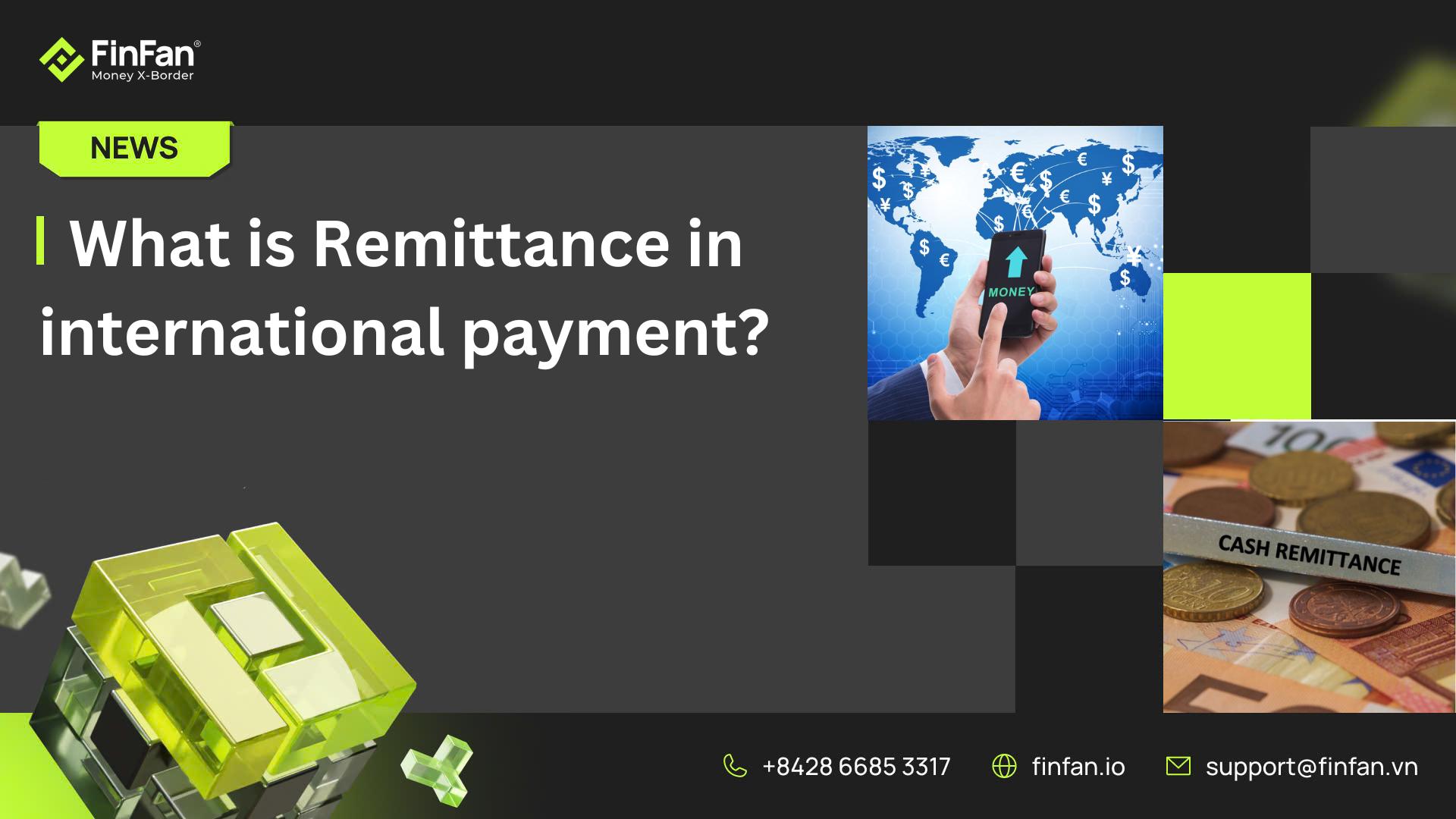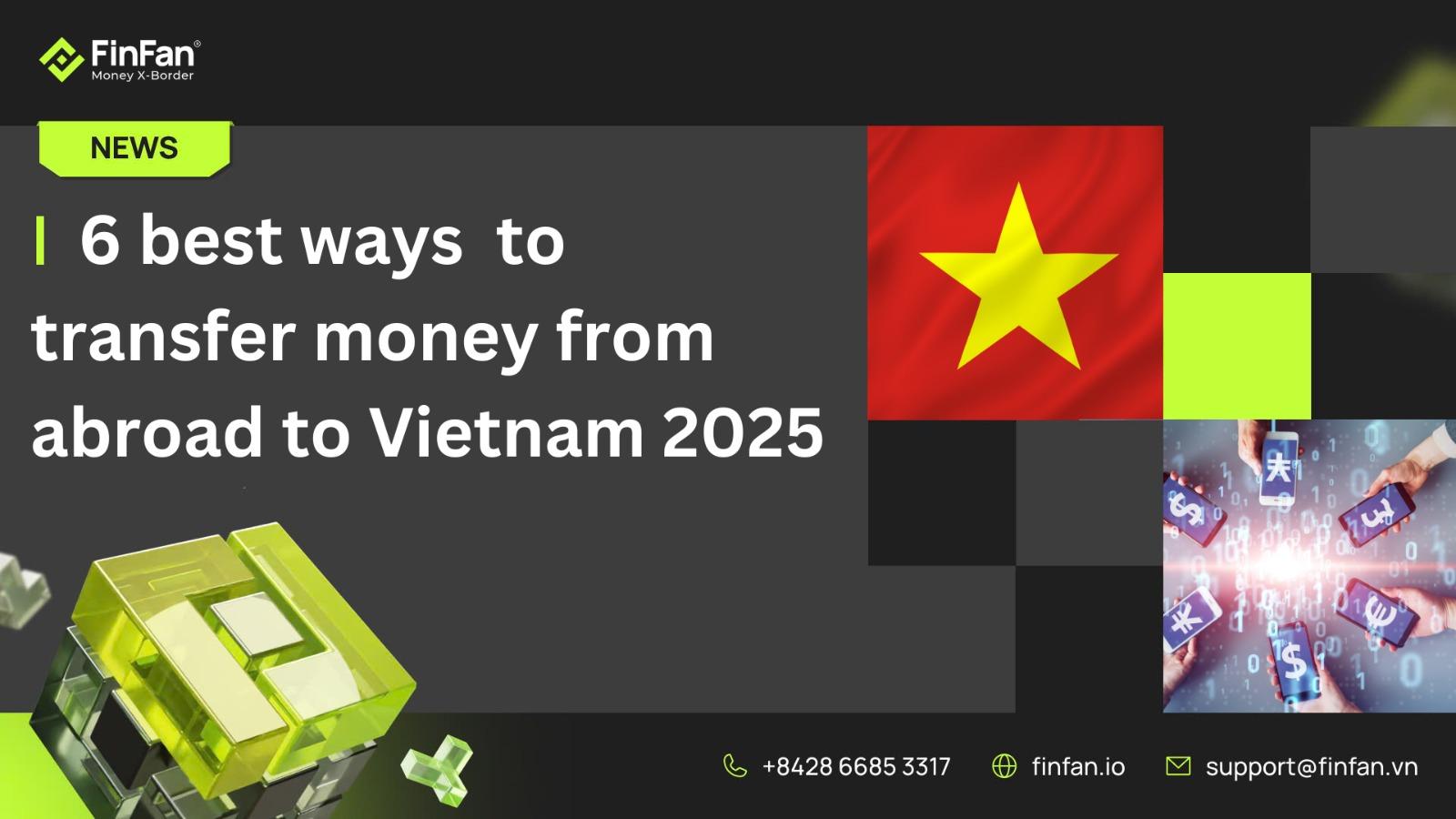What is Remittance in international payments?

Remittance in international payments plays a crucial role in the global economy, enabling individuals and businesses to conduct financial transactions across borders efficiently. So, what is remittance in international payments, and what are the best ways to process secure, fast, and cost-effective transactions? FinFan will provide an in-depth look into this concept and explore the most effective international money transfer methods today.
What is Remittance?
Remittance, also known as cross-border money transfers, refers to sending funds from an individual or business abroad to a recipient in another country. This financial flow is a fundamental component of the global economic system, particularly for developing economies like Vietnam, where remittance inflows contribute significantly to GDP.
According to the World Bank, global remittances exceeded $800 billion in 2023, with developing nations receiving more than 75% of total remittance flows. Vietnam ranks among the top remittance-receiving countries, with over $19 billion in inflows in 2023, accounting for approximately 5% of GDP.
In today’s globalized world, remittance is no longer limited to migrant workers sending money back home. It has expanded into various sectors, including trade payments, business transactions, and digital finance. This transformation makes remittance an integral part of modern international payment systems.

Common types of remittance in international payments
Personal remittance
This refers to money transfers between individuals, typically from migrant workers to their families. Popular methods include bank transfers, e-wallets, or money transfer services like Western Union and MoneyGram. Personal remittance transactions often occur regularly, have moderate transaction values, and require fast processing times.
Commercial remittance
Commercial remittance involves business-to-business (B2B) transactions, commonly used in international trade payments or service settlements. These transactions require a high level of transparency and accuracy and typically involve methods such as SWIFT wire transfers, business e-wallets, or letters of credit (L/Cs).
Other forms of remittance
Besides personal and commercial remittance, there are additional types, including non-profit remittance (transfers to charities or aid funds), investment remittance (sending funds for international investments such as real estate or stocks), and intra-bank remittance (transfers within multinational banking systems).

How does the remittance process work?
Step 1: Initiating the transaction
The sender selects a suitable remittance method, such as a bank transfer, financial application, or fast money transfer system. The remittance service provider verifies the sender’s identity and the source of funds to ensure the transaction's legality.
Step 2: Processing the transaction
Once verified, the system transfers the funds from the sender’s account to the financial intermediary in the recipient’s country. Some transactions undergo Anti-Money Laundering (AML) checks and Know Your Customer (KYC) verification before approval.
Step 3: Receiving the funds
The funds are credited to the recipient’s chosen method, whether a bank account, e-wallet, or cash pickup location. Processing times range from a few minutes to several days, depending on the payment method and intermediary systems.
Current challenges in remittance
Transaction fees
Despite its importance, remittance faces several challenges that complicate cross-border money transfers. One of the biggest concerns is high transaction fees. Many banks and financial institutions charge 3-5% or more per transaction, with additional fixed fees, making small transactions disproportionately expensive. Moreover, unclear exchange rates prevent senders and recipients from accurately estimating the final received amount.
Processing time delays
Slow transaction processing is another issue, with many remittances taking 3-5 business days to complete due to dependence on traditional banking systems. This delay can significantly impact businesses that require fast payments to maintain cash flow.
Regulatory compliance
Strict legal regulations in each country pose significant barriers. Financial institutions must comply with AML, KYC, and foreign exchange regulations, which can prolong transaction times and create inconvenience for users. Additionally, with the rise of financial fraud, senders and recipients face increased risks if they use unsecured or unofficial money transfer channels. Choosing a reliable remittance service is crucial for ensuring safe and efficient transactions.
FinFan – The top remittance solution for businesses and individuals
 To address these challenges, FinTech platforms like FinFan provide modern remittance solutions, ensuring faster transactions, lower costs, and enhanced security. With an extensive network of partners, FinFan allows users to complete international money transfers within minutes, offering competitive fees significantly lower than traditional banks.
FinFan supports multiple payment methods, including IBAN, SWIFT, e-wallets, and international cards, allowing individuals and businesses to select the most suitable option. Additionally, FinFan’s platform leverages blockchain technology and open APIs, optimizing transaction processes for greater transparency and security.
By partnering with leading financial institutions such as VISA, MoneyGram, and SWIFT, FinFan delivers a comprehensive financial ecosystem that empowers SMEs and individuals to expand international transactions without facing payment barriers. This solution enables businesses to leverage global trade opportunities and thrive in the digital economy.
To address these challenges, FinTech platforms like FinFan provide modern remittance solutions, ensuring faster transactions, lower costs, and enhanced security. With an extensive network of partners, FinFan allows users to complete international money transfers within minutes, offering competitive fees significantly lower than traditional banks.
FinFan supports multiple payment methods, including IBAN, SWIFT, e-wallets, and international cards, allowing individuals and businesses to select the most suitable option. Additionally, FinFan’s platform leverages blockchain technology and open APIs, optimizing transaction processes for greater transparency and security.
By partnering with leading financial institutions such as VISA, MoneyGram, and SWIFT, FinFan delivers a comprehensive financial ecosystem that empowers SMEs and individuals to expand international transactions without facing payment barriers. This solution enables businesses to leverage global trade opportunities and thrive in the digital economy.
Conclusion
Remittance is not just a payment method but a key driver of global economic growth. With the rise of FinTech, modern remittance solutions like FinFan are revolutionizing how individuals and businesses handle cross-border transactions. As a leading remittance provider, FinFan offers fast, secure, and cost-efficient money transfer solutions, helping businesses and individuals conduct seamless transactions worldwide.
FAQs – Frequently asked questions
Is remittance the same as international money transfers?
Remittance is a type of international money transfer, but it focuses on supporting individuals and businesses with faster, optimized solutions.
Which remittance services offer the lowest fees?
Platforms like FinFan, Wise, and PayPal generally provide lower fees compared to traditional banks.
How can I receive money via remittance quickly?
Choosing fast methods like bank transfers, e-wallets, or cash pickup services ensures quicker transactions.





